Last week, I saw a great deal of posts like “my browser demonstrates me undesirable Luckymedia.website pop-up advertisements, is it a virus?” or “these Luckymedia.website pop-up ads in my Chrome making me insane, how to handle them?”. According to the statistics for last months, computer virus creators began a broad adware distribution campaign. Let me show you, how you can remove the computer viruses from your personal computer, and also forget about the aggravating Luckymedia.website pop-ups.
Pop-Ups : Discovering The Nature
You can admit that some websites (like a Luckymedia.website) offer you pop-up promotions. The message can contain something like “do you want to get notices regarding the most up to date news?” or “permit alerts to be reported regarding recent discount rates?”. Typically, such messages are safe, and can only distract you with its abrupt showing up. And it can be easily disabled, in case notices from this web site are no longer desired.
Pop-up notifications are fairly an reliable marketing mechanism. If you have an interest in goods of some type, you can allow pop-ups from the internet site where you can purchase this things, and also as soon as these items are in stock again, or if you can have a price cut – you will certainly obtain the notice about this. The counterparty – online stores, cars and truck lending services, etc – will be in profit, too – buyer will definitely get a suggestion concerning the product he/she meant to purchase. And also such a marketing approach is practically free of charge – this element is very vital for firms.
| Site | Luckymedia.website |
| IP Address | 178.62.225.201 |
| Infection Type | Adware, Push notifications, Unwanted Ads, Pop-up Ads |
| Symptoms | Annoying pop-up ads in the right corner. |
| Similar behavior | Luckymedia.space, Luckymedia.surf, Luckymedia.casa |
Luckymedia.website Pop-Ups Are Not So Safe
However sometimes pop-up ads can appear without your permission, and with a text which is completely different from your present interests or search queries. And, besides unwanted Luckymedia.website pop-ups from the unknown site, you can at the same time see a lot of advertisements, including ones on the pages which primarily have no promotions at all. Such a situation can be the trace of adware presence.
Adware is the sort of pc virus which injects into your personal computer, and then begins showing you different ads. Their subject typically has no correlation with your usual search questions. Besides banner ads, your web browser can additionally suggest you a substantial amount of various Luckymedia.website pop-up advertisements, which come into view in the bottom right area.
The model of adware use is very sly. The huge pack of adware is distributed with trojan viruses, which are infiltrated in your system earlier. Advertisements, which are demonstrated to you by virus, are paid by their makers. In a few weeks, all anti-malware programs began to catch these adware, hence, trojan sheds in productivity. And to terminate the user’s computer system, virus distributors begin ransomware distribution with these trojans.
Even if there is no active ransomware distribution, your computer may still be impacted by adware virus. A big quantity of advertisements along with Luckymedia.website pop-ups can make your PC as slow-moving as snail, so your normal work will be impossible to carry out in usual manner.
How Can I Deal With Luckymedia.website Pop-Ups?
Concluding the paragraphs above: your desktop, as well as your information, is in a serious risk. To quit this virus, you need to use virus removal tool. Microsoft Defender, which is installed in every Windows 10 distribution, is able to take care of Luckymedia.website pop-ups malware. Nonetheless, it can not revert the browser alterations which were implemented by malicious program. One more negative aspect of the anti-malware program by Microsoft is its specific susceptability: malware can disable Microsoft Defender through the Group Policies after being implanted to your computer system.
To be 100% sure that your personal computer is clean of any viruses now, and will be clean in future, I can offer you to use GridinSoft Anti-Malware.
To detect and remove all unwanted programs on your computer, including Luckymedia.website pop-ups virus, with GridinSoft Anti-Malware, it’s better to use Standard or Full scan. Quick Scan is not able to find all the malware, because it checks only the most popular registry entries and folders.
You can observe the detected malware sorted by their possible hazard during the scan process. But to choose any actions against malware, you need to wait until the scan is finished, or to stop the scan.

To choose the action for each spotted virus or unwanted program, click the arrow in front of the name of detected malicious program. By default, all the viruses will be removed to quarantine.

Reverting browser settings to original ones
To revert your browser settings, you need to use the Reset Browser Settings option. This action cannot be intercepted by Luckymedia.website virus, hence, you will surely see the result. This action can be located in the Tools tab.

After choosing the Reset Browser Settings button, the menu will be displayed, where you can choose, which settings will be reverted to original.

Reset browser setiings without utilizing third-party programs
Besides using anti-malware programs for browser recovery, you can choose the “Reset browser settings” option, which is usually embedded in all popular web browsers.
Reset Microsoft Edge ⚙ Settings
- Open "Settings and more" tab in upper right corner, then find here "Settings" button. In the appeared menu, choose "Reset settings" option:
- After picking the Reset Settings option, you will see the following menu, stating about the settings which will be reverted to original:
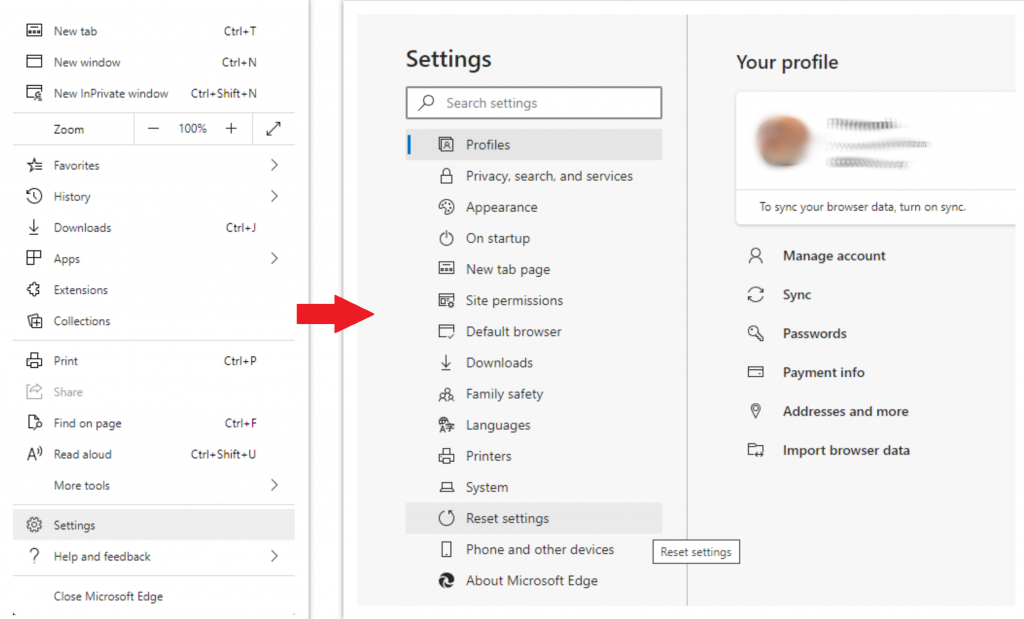
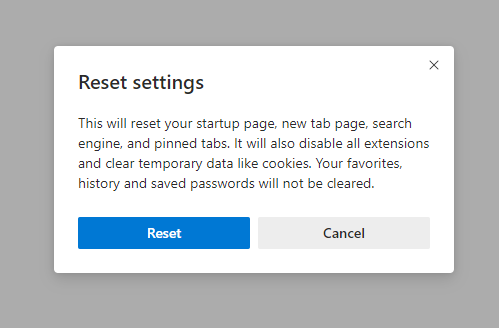
Reset Mozilla Firefox ⚙ Settings
- Open Menu tab (three strips in upper right corner) and click the "Help" button. In the appeared menu choose "troubleshooting information":
- In the next screen, find the "Refresh Firefox" option:
- Open Settings menu by pressing the gear icon in the toolbar (left side of the browser window), then click "Advanced" option, and choose "Browser" button in the drop-down list. Scroll down, to the bottom of the settings menu. Find there "Restore settings to their original defaults" option:
- After clicking the "Restore settings..." button, you will see the window, where all settings, which will be reset, are shown:
- Open Settings tab, find the "Advanced" button. In the extended tab choose the "Reset and clean up" button:
- In the appeared list, click on the "Restore settings to their original defaults":
- Finally, you will see the window, where you can see all the settings which will be reset to default:
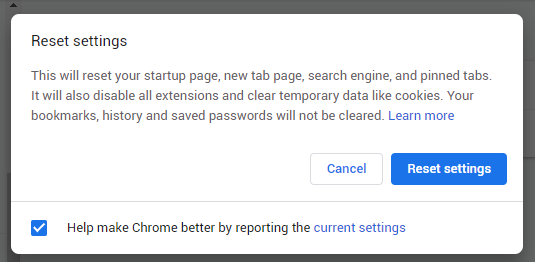
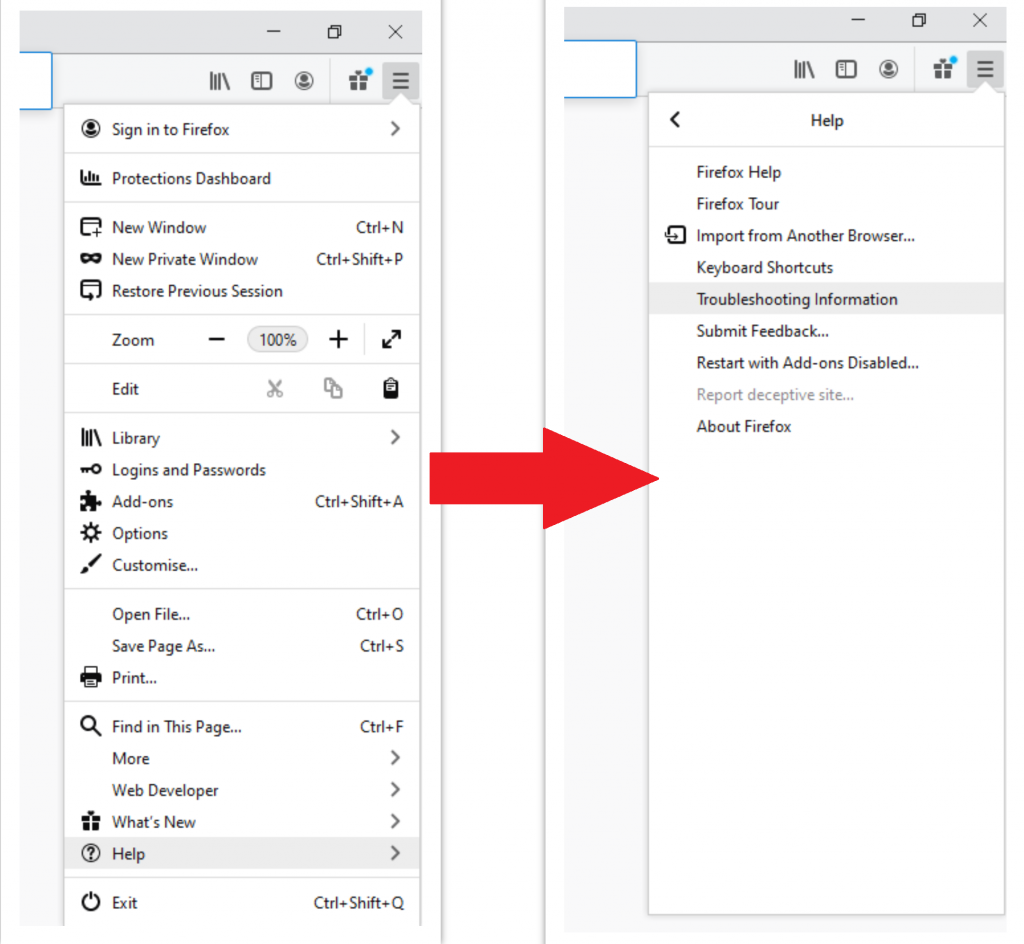
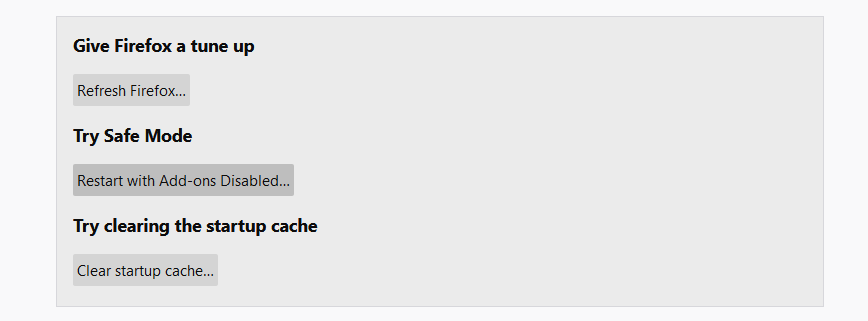 After choosing this option, you will see the next message:
After choosing this option, you will see the next message:

Reset Opera ⚙ Settings


Reset Google Chrome ⚙ Settings
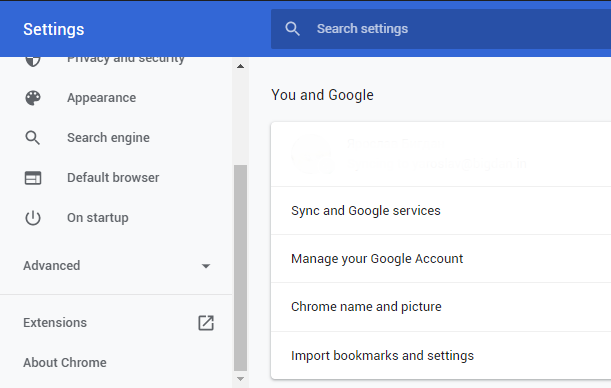
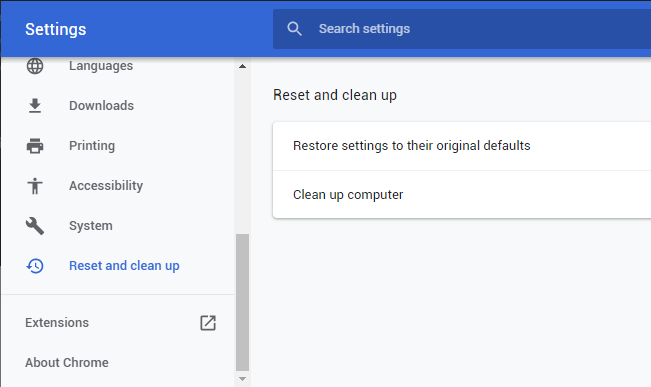
As an afterword, I want to say that the time plays against you and your PC. The activity of browser hijacker Luckymedia.website must be stopped as soon as possible, because of possibility of other malware injection. This malware can be downloaded autonomously, or offered for you to download in one of the windows with advertisements, which are shown to you by the hijacker. You need to act as fast as you can.











